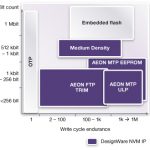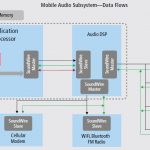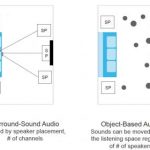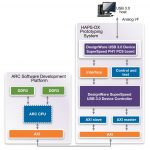You are currently viewing SemiWiki as a guest which gives you limited access to the site. To view blog comments and experience other SemiWiki features you must be a registered member. Registration is fast, simple, and absolutely free so please,
join our community today!
WP_Term Object
(
[term_id] => 178
[name] => IP
[slug] => ip
[term_group] => 0
[term_taxonomy_id] => 178
[taxonomy] => category
[description] => Semiconductor Intellectual Property
[parent] => 0
[count] => 1947
[filter] => raw
[cat_ID] => 178
[category_count] => 1947
[category_description] => Semiconductor Intellectual Property
[cat_name] => IP
[category_nicename] => ip
[category_parent] => 0
[is_post] =>
)
Long Term Evolution (LTE)-based 4G technology is reshaping the wireless infrastructure landscape, and that brings a new set of opportunities for IP core licensor CEVA Inc. and its DSP offerings for multi-mode LTE base stations.
LTE devices—both handsets and radio base stations—are haunted by power constraints, mainly due … Read More
As of today NVM IP has been mostly used in SoC or IC to support very specific needs like analog trimming and calibration or encryption key integration for Digital Right Management (DRM) purpose. In other words small size (less than 1K-bit) few times programmable (FTP) NVM IP was enough to support these needs, thus most of the NVM IP… Read More
At the end of last year, I moderated a Sonics webinar to introduce the concept of a network-on-chip or NoC. It was called NoC 101 and the replay is still available here.
Well it is a new year and time for chapter 2. I will be moderating a webinar next Wednesday February 4th at 10am pacific time. Once again the webinar itself will be delivered… Read More
Interesting news today : Lattice Semiconductor, FPGA vendor is buying Silicon Image. In fact, Silicon Image is a chip vendor, but also an innovator, licensing well known IP like HDMI, MHL and more. If we consider the amount paid for Silicon Image ($600 million), compared with the last full year revenue, $276M in 2014, that’s a 2.2X… Read More
Today, Smartphones and mobile devices have become center of innovation with multiple functions getting into them. Considering the audio or voice application, there can be multi-way conferencing, video chat, complete audio/video streaming, gaming, voice triggering and recognition,… you name an application, and it will … Read More
If you think that the sound atmosphere created by Dolby or Surround–sound audio is the best you can achieve today by using complexes algorithms on DSP, like I thought before knowing about “Object-Based Audio”, you must read these lines! In fact Surround-sound Audio is limited by the number of speakers installed in a room, or a car,… Read More
Sonics announced today that Toshiba has completed the SoC design using Sonics’ on-chip network IP for its new TZ2100 group of application processors. The TZ2100 group of applications processors are the newest addition to Toshiba’s ApP Lite (Application Processor Lite) TZ2000 series. With this group of ApP Lite devices, sound… Read More
With growing SoC size, complexity, software and hardware content in it and shrinking time-to-market, the SoC design completion in time has become increasingly dependent on IP which need to be sourced (internally or externally), customized according to the design need and integrated together into the SoC. While IP providers… Read More
Microprocessor vendors such as Andes have been saying for some time that security requires extensive hardware support. In particular, embedded processors in intelligent sensors inside IoT chips are now popular targets for hackers, who find it easy to change the program code and system parameters to alter the operation of the… Read More
As we left an exciting year 2014 which is poised to record 7+ % increase in semiconductor revenue (~ $338 B) compared to 2013 (~ $315 B) and entered into another promising year 2015 for semiconductors, I looked back over the year bygone and collected inferences from some of the major important events which clearly convey how 2015 can… Read More






Quantum Computing Technologies and Challenges